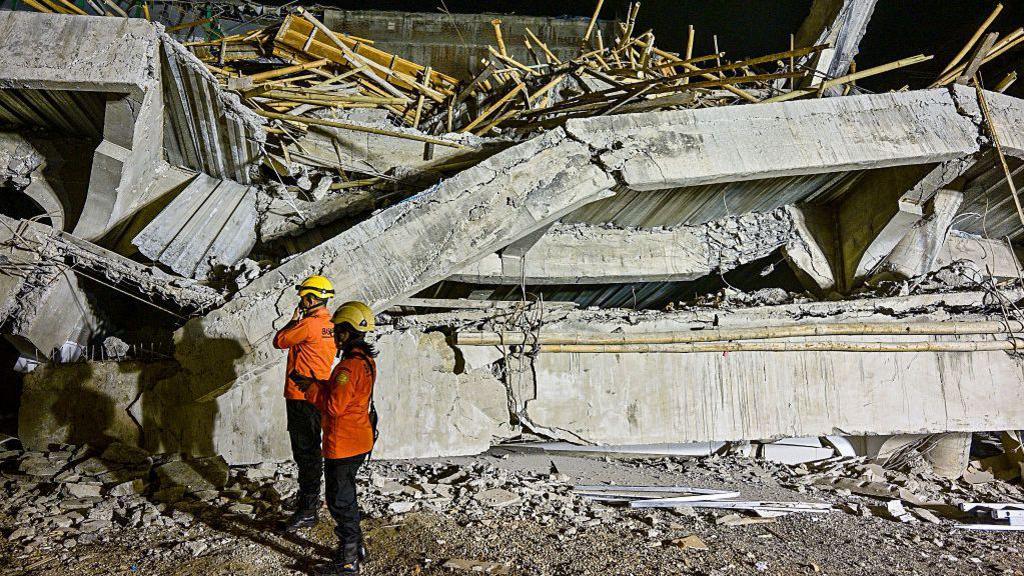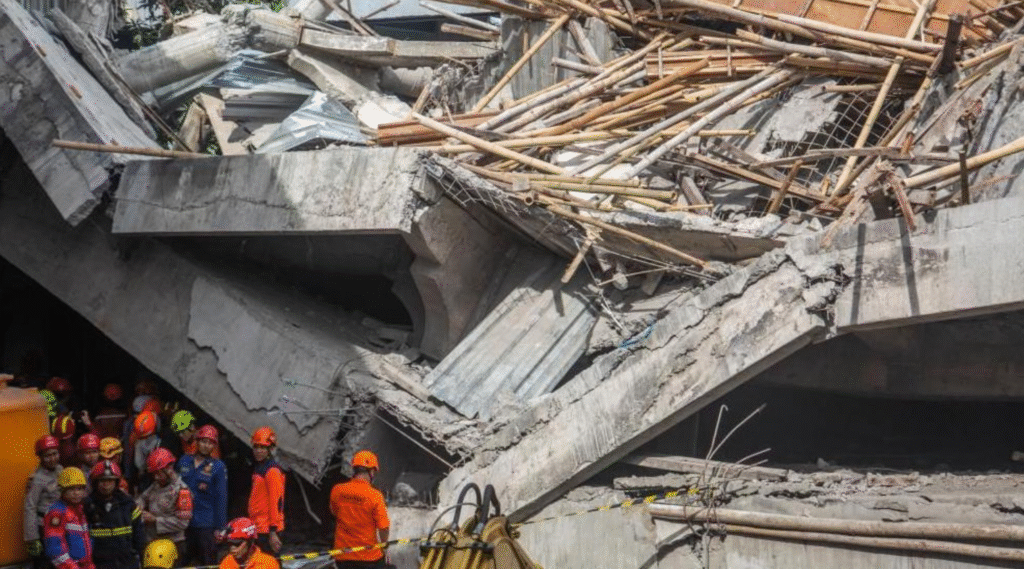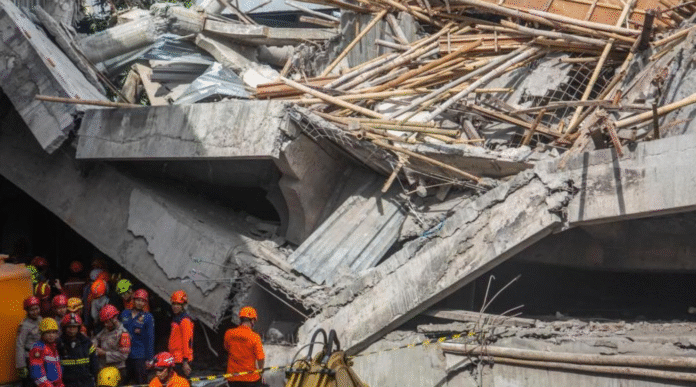Indonesian School Collapse: 7 Shocking Facts Revealed After Deadly Tragedy
The Indonesian school collapse in East Java has left families shattered and a nation grieving. At least three people have been confirmed dead, with dozens more injured and trapped beneath rubble at the Al Khoziny Islamic Boarding School in Sidoarjo. The tragedy occurred on Monday when the building suddenly gave way during prayers, exposing severe flaws in construction safety and oversight.
Rescue operations have been ongoing, but the fragile structure poses immense risks to both survivors and emergency teams. The Indonesian school collapse highlights the urgent need for stronger building regulations and improved safety standards in the country.

Indonesian School Collapse: What Happened in East Java?
On Monday, hundreds of students gathered for prayer at the Al Khoziny Islamic Boarding School when the two-storey structure suddenly collapsed. Officials confirmed that three lives were lost and nearly 100 others were hospitalized, with at least 38 people still trapped under the debris.
Authorities revealed that the school had attempted to expand by adding extra floors, but the foundation could not support the additional weight. This structural weakness directly contributed to the Indonesian school collapse.
Why Did the Indonesian School Collapse Happen?
The disaster mitigation agency reported that the school’s foundation was unstable and not designed to bear multiple floors. As a result, the additional construction created overwhelming pressure, causing the collapse.
Adding to the tragedy, Sidoarjo officials revealed that the school expansion was carried out without proper permits. This raises serious questions about oversight and accountability in Indonesia’s education and construction sectors.
Voices from the Indonesian School Collapse
Parents, survivors, and rescuers have shared heartbreaking accounts of the chaos.
-
Rosida, a mother waiting for news of her missing son, said she last spoke to him the day before the incident. One of her other children, also injured in the collapse, is currently in the hospital.
-
Muhammad Rijalul Qoib, a 13-year-old student, recalled the sound of rocks crashing down. “It got louder and louder,” he told local media. He ran outside but was struck by falling debris before managing to escape.
-
Another student, Sofa, described seeing classmates with broken bones and severe injuries.
These testimonies underscore the fear and trauma that students and families experienced during the Indonesian school collapse.
Indonesian School Collapse: Challenges in Rescue Operations
Search and rescue efforts have been extremely difficult due to the building’s dangerous condition. According to Basarnas chief Mohammad Syafeii, the collapsed structure resembles a “pancake,” with heavy concrete slabs stacked on top of each other.
While heavy machinery such as cranes and excavators could lift the slabs, rescuers fear these actions might cause further injury to survivors still trapped. Specialized tools and extrication units have been deployed, but progress remains slow.
The risk of secondary collapse has forced authorities to suspend rescue work at times, intensifying the agony of families waiting outside.
Indonesian School Collapse and Pesantren Oversight
The Al Khoziny Islamic Boarding School is a pesantren, a traditional Islamic boarding school. Pesantren institutions fall under the Ministry of Religious Affairs rather than the Ministry of Education, and oversight is often limited.
While many pesantren combine Islamic and general education, they frequently operate without proper permits or adequate regulation. The Indonesian school collapse has reignited debate over the lack of consistent monitoring of these institutions.
Broader Safety Concerns in Indonesia
The Indonesian school collapse is not an isolated incident. The country’s construction sector has a poor safety record, rated among the worst globally by the International Labour Organization.
Just earlier this month, a similar tragedy struck West Java, where a building collapsed during a prayer recital, killing four people and injuring dozens. These recurring disasters highlight a systemic failure in enforcing building standards.
Political and Community Reactions
Indonesian officials have expressed condolences but also acknowledged serious failings. The school’s caretaker, KH Abdus Salam Mujib, apologized to families and called the tragedy “God’s will.”
Sidoarjo’s regent criticized the school’s management for ignoring building regulations and bypassing permit requirements. Meanwhile, families continue to demand accountability, as they wait anxiously outside the collapsed structure.

Indonesian School Collapse: A National Wake-Up Call
The Indonesian school collapse is more than just a local disaster, it’s a stark reminder of the consequences of weak safety enforcement and unregulated construction. With thousands of pesantren across the country, experts warn that similar risks could threaten other communities if immediate reforms are not implemented.
Stronger oversight, stricter building codes, and proactive safety inspections are urgently needed to prevent another tragedy of this scale.
Conclusion
The Indonesian school collapse has left three people dead, dozens critically injured, and many still trapped under rubble. Beyond the heartbreaking loss of life, this disaster exposes deeper problems in Indonesia’s construction industry and education sector oversight.
As rescuers continue their race against time, the tragedy serves as a grim reminder that unchecked construction and weak regulation put lives at risk. Families mourning loved ones now wait for answers, while the nation grapples with how to prevent such a catastrophe from happening again.

